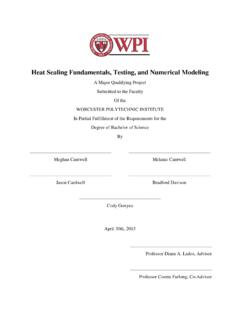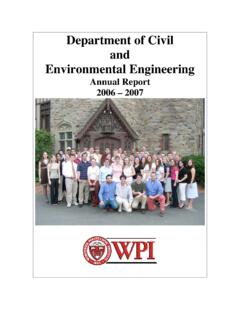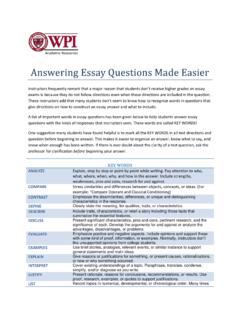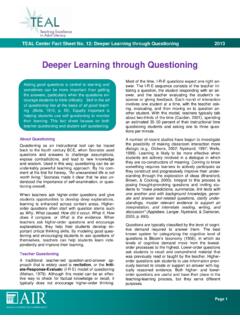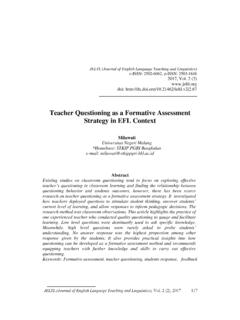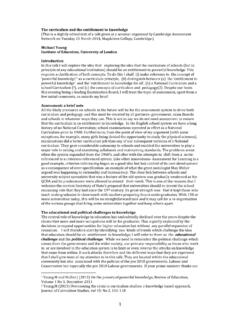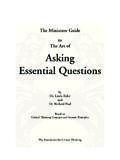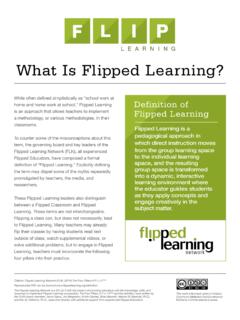Transcription of Knowing Yourself: Cultural Differences and Self Awareness
1 Knowing yourself : Cultural Differences and Self Awareness The Silent Interview Where did he/she grow up? What is his/her ethnicity? What type of work does his/her parents do? What does he/she do in his/her spare time? How many languages does he/she speak? What kinds of music does he/she like? Social Categorization Theory Categorization Automatic, outside conscious processing Usefulness: speed of processing and efficiency of organizing information Bias In-groups favorability, highly valued, more trusted, and greater cooperation Out-groups viewed homogeneously and negatively Social Psychology 101. Self-Serving bias Self-Enhancing Bias (Success). Self-Protective Bias (Failure). Fundamental Attribution Error personality-based, explanations for behaviors vs. situation explanations Actor-Observer Bias "If others do it, it's their fault; if I do it, it's not my fault, it's because of the situation I'm in.
2 ". Projection By the year 2050, it is projected that close to 50% of the U. S. population will be of biracial, multiethnic or multiracial heritage ( Census Bureau, 2001). How will we fare as staff, faculty, Administrators and colleagues? Guidelines on Multicultural Education, Training, Research, Practice, and Organizational Change for Psychologists (APA, 2002. Guideline #1. WE are encouraged to recognize that, as Cultural beings, we may hold attitudes and beliefs that can detrimentally influence our perceptions of and interactions with individuals who are ethnically and racially different from ourselves Guideline #2. WE are encouraged to recognize the importance of multicultural sensitivity/responsiveness, knowledge, and understanding about ethnically and racially different individuals Guideline #3. As educators, WE are encouraged to employ the constructs of multiculturalism and diversity in.)
3 Education Addressing Cultural complexities in practice Hays, P. (2001). Addressing Cultural complexities in practice. Washington, DC: American Psychological Association. Becoming Culturally Competent Engage in our own ongoing Cultural self assessment through individually- oriented work ( , introspection, self- questioning , reading, some forms of research) and interpersonal learning ( , community activities, diverse media, and peer-level relationships) . (Hays, 2001). The Multidimensional Ecosystemic Comparative Approach (MECA). Falicov, C. J. (1998). Latino families in therapy. New York: Guilford Press Revisiting culture . Culture is those sets of shared worldviews, meanings and adaptive behaviors derived from simultaneous membership and participation in a variety of contexts, such as language; rural, urban or suburban settings; race, ethnicity and socioeconomic status; age, [sex], gender, [sexual orientation], religion, nationality.
4 Employment, education, occupation, political ideology, and stage of acculturation, [etc.] . (Falicov, 1983). Deconstructing Diversity Lessonlearned from six blind men and an elephant (Schmidt & Friedman, 1985). Multidimensional Edges of officially or unofficially recognized Cultural groups Argentine Jew Citizen vs. Illegal Gay Puerto Rican Poor, Black Cuban Male Socio- Cultural Profile Socio- Cultural Category Membership Status: Dominant/Subordinate/. Mixed level of power and privilege Race Ethnicity Class Gender and Sex Religion Sexual Orientation Ability/disability Oppression (Bias). systematic mistreatment of the powerless by the powerful , resulting in the targeting of certain groups within society for fewer of its benefits includes overt and/or subtle devaluing or non-acceptance of the powerless group oppression can be economic, political, social and/or psychological Adopted from the ALL TOGETHER DIFFERENT STAFF AND.
5 FACULTY DIVERSITY TRAINING Manual, Montclair State University, Montclair, NJ 07043. Samples of Oppression Sexism Racism Classism Anti-Semitism Ageism Heterosexism Oppression of people with disabilities Socio- Cultural Profile Socio- Cultural Category Membership Status: Dominant/Subordinate/. Mixed level of power and privilege Race Ethnicity Class Gender and Sex Religion Sexual Orientation Ability/disability My Personal Experience Irvington/Maplewood, NJ (Ethnicity). Colombian (Nationality). The Suburbs (Racial and Class). /watch?v=Tr1 KDlRMjN. Y. Race A local geographic or global human population distinguished as a more or less distinct group by genetically transmitted physical characteristics . A group of people united or classified together on the basis of common history, nationality, or geographic distribution . American Heritage Dictionary, 2007. Ethnicity Ethnicity is the acceptance of the group mores and practices of one's culture of origin and the concomitant sense of belonging.
6 Individuals may have multiple ethnic identities that have different salience at different times . Fouad, N. (2005). Nationality The status of belonging to a particular nation by origin, birth, or naturalization . A people having common origins or traditions and often constituting a nation . American Heritage Dictionary, 2007. Key Lessons Identity is multidimensional made up of a number of socio- Cultural factors Identify is dynamic and fluid these factors may interact to enhance, compromise, or neutralize each other Identify is defined by context Identity is connected to power and privilege The SCP promotes comfortable and safe dialogue Ecosystemic Considers interactions with outside systems, institutions, and agencies Schools Political arena Community DYFS. Social Clubs Courts Access to resources, entitlement, powerlessness Comparative Similarities and Differences are treated comparatively so that their relativism becomes apparent.
7 Mexican vs. Puerto Ricans vs. Cubans Migration Political status Host perception Lesbian vs. Gay vs. Bisexual How do we go about becoming more culturally competent Is it really possible to know every culture? Role of professionals? Role of students Striking a balance Excellent Resource Culture Grams: concise, reliable, and up-to-date country reports on 187 cultures of the world ..it would not be appropriate for the therapist to expect Jean to educate her about the general Cultural meanings of his identity. Nor would it be wise, because information about a whole culture from the client's sole perspective will often be quite limited. Obtaining this type of information is part of a therapist's own personal learning, most of which should occur outside the therapy setting. As an analogy, consider a therapist who has no direct experience with people who suffer from dissociative disorder; she certainly would not expect the first client she sees with this disorder to educate her about its common characteristics.
8 Rather, she would obtain this information outside the therapeutic relationship and then use the assessment time to explore the client's personal experience of the disorder Hays, 2001,p. 65. Cultural Influences Minority Groups Age and generational influences Children, adolescence, elders Developmental and acquired disabilities People with developmental or acquired disabilities Religion and spiritual orientation Religious minority cultures Ethnicity Ethnic minority cultures Socioeconomic status People of lower status by class, education, occupation, income, rural, or urban habitat, family name Sexual orientation Gay, lesbian, bisexual people Indigenous heritage Indigenous people National origin Refugees, immigrants, international students Gender Women, transgender people Other Good Resources Boyd-Franklin (2003). Black families in therapy. New York: Guilford Press Tatum, B. (2002) Why are all the black kids sitting together in the cafeteria.
9 New York: Basic Books. Final Thoughts . Open ended sentences I learned that . I was surprised that . I was disappointed that . I was pleased that . Contact Info: Email: Phone: 973-655-7033. Address:Montclair State University Upper Montclair, NJ 07043.
